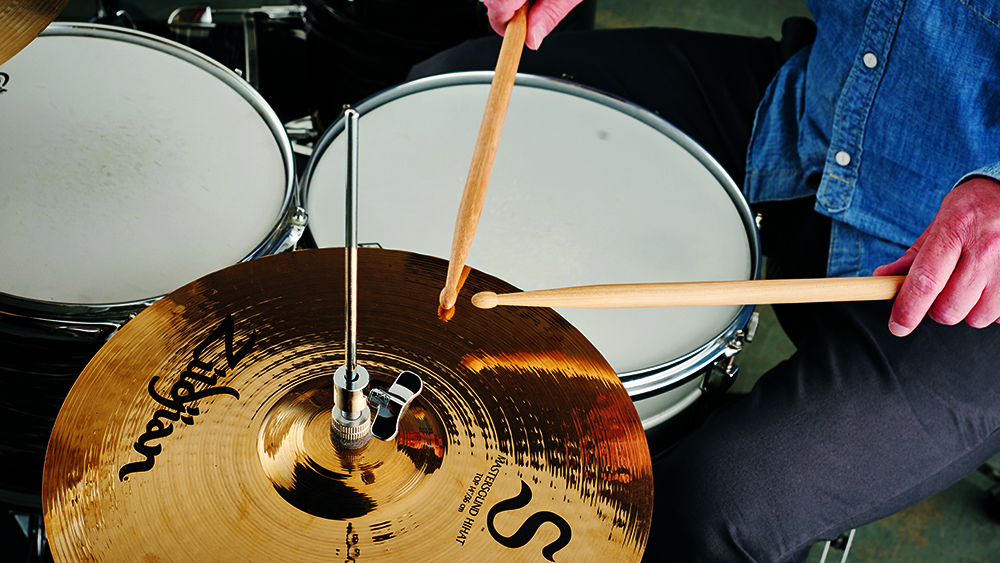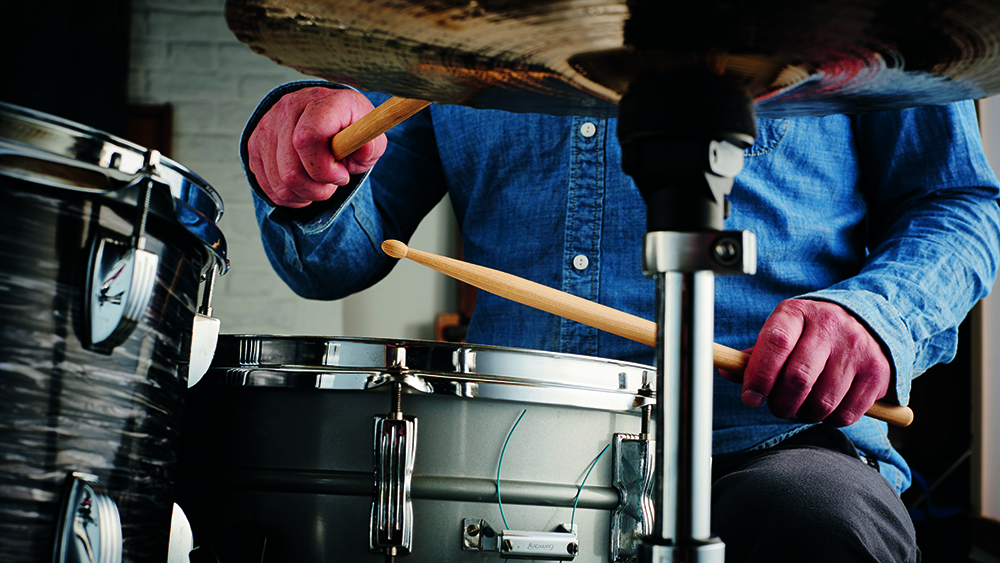Next level grooves part 1: hi-hat variations
Add colour and bring emphasis to your grooves

After getting to grips with some essential grooves it can be time to focus on developing some of the embellishments and variations heard in the playing of more experienced drummers.
However, some of these nuances can be difficult to discern as they are, by their nature, brief and/or subtle within the playing context. And yet their presence can offer a groove a quality and sense that the player is free to adapt the pattern, as is musically appropriate, as opposed to being rigidly locked into a single inflexible idea.
So in our next level groove series, we're lifting the lid on some of the concepts that you may have heard in the playing of your favourite drummers and offering some ways for you to take your own grooves to the next level.
First up, let's look at some handy hi-hat variations...
1. Eighth note, followed by two sixteenth notes
One frequently used alternative is the use of what are often called broken 16th-note rhythms. Example 1 shows one of the most popular variants, which could be regarded as an eighth note followed by two 16th notes. This would normally be played emphasising the quarter note, perhaps on the edge of the hi-hats as can be seen here, but it can also be played emphasising the upbeat eighth note.

2. Two sixteenth notes, followed by an eighth note
Another popular broken 16th-note pattern involves playing the first three 16th-notes of each beat. Again, this can be played accenting either first or the third note.

3. Here the hi-hat returns to eighth notes with an upbeat accent
Example 3 sees us return back to the basic eighth-note hi-hat pattern only this time accenting the upbeat eighth-note. This can be a lot more challenging than playing just the upbeat eighth note on its own as the hands will move in the opposite direction in preparation to play the backbeat.
Want all the hottest music and gear news, reviews, deals, features and more, direct to your inbox? Sign up here.

4. The ‘rock paradiddle’ pattern played between hi-hat and snare
Instead of playing an ostinato (repeating pattern) in the right hand we can also get the left hand involved and play a sticking. The one shown in Example 4 is sometimes referred to as a ‘rock paradiddle’ and consists of one half of a single paradiddle and the second half of an inverted paradiddle. It can be a challenge playing this kind of groove along with different bass drum patterns but when doing so it can be effective in cleaning up the sound of the pattern to remove any ghosts notes that coincide with the bass drum.

MusicRadar is the number one website for music-makers of all kinds, be they guitarists, drummers, keyboard players, DJs or producers...
- GEAR: We help musicians find the best gear with top-ranking gear round-ups and high-quality, authoritative reviews by a wide team of highly experienced experts.
- TIPS: We also provide tuition, from bite-sized tips to advanced work-outs and guidance from recognised musicians and stars.
- STARS: We talk to musicians and stars about their creative processes, and the nuts and bolts of their gear and technique. We give fans an insight into the craft of music-making that no other music website can.

